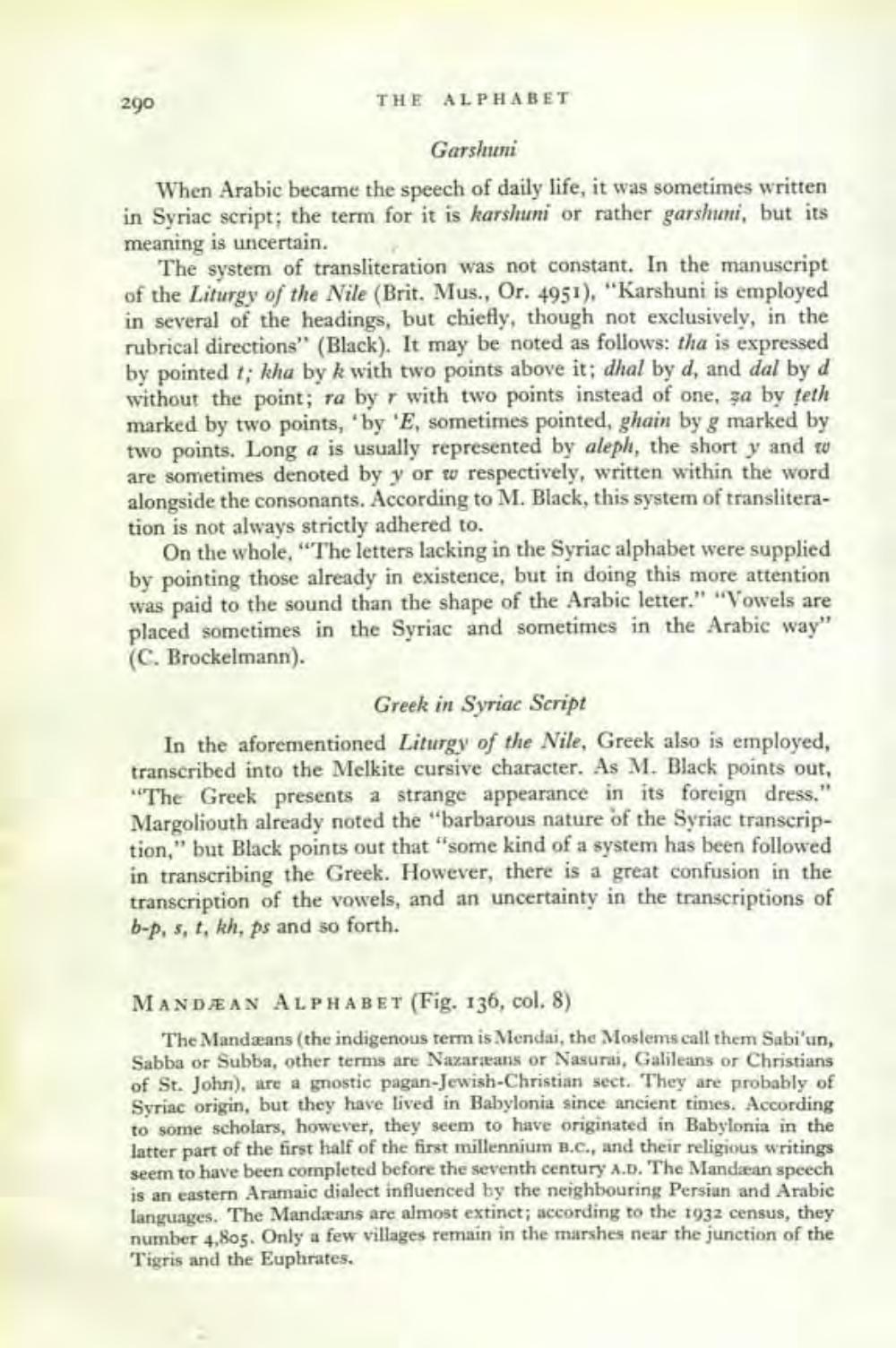________________
290
THE ALPHABET
Garshini When Arabic became the speech of daily life, it was sometimes written in Syriac script; the term for it is karshuni or rather garshani, but its meaning is uncertain.
The system of transliteration was not constant. In the manuscript of the Liturgy of the Nile (Brit. Mus., Or. 4951), "Karshuni is employed in several of the headings, but chiefly, though not exclusively, in the rubrical directions" (Black). It may be noted as follows: tha is expressed by pointed t; kha by k with two points above it; dhal by d, and dal by d without the point; ra byr with two points instead of one, za by seth
ced by two points, 'by 'E, sometimes pointed, gham by g marked by two points. Long a is usually represented by aleph, the short y and to are sometimes denoted by y or w respectively, written within the word alongside the consonants. According to M. Black, this system of transliteration is not always strictly adhered to.
On the whole, "The letters lacking in the Syriac alphabet were supplied by pointing those already in existence, but in doing this more attention was paid to the sound than the shape of the Arabic letter." "Vowels are placed sometimes in the Syriac and sometimes in the Arabic way" (C. Brockelmann).
Greek in Syriac Script In the aforementioned Liturgy of the Nile, Greek also is employed, transcribed into the Melkite cursive character. As M. Black points out, "The Greek presents a strange appearance in its foreign dress," Margoliouth already noted the "barbarous nature of the Syriac transcription," but Black points out that "some kind of a system has been followed in transcribing the Greek. However, there is a great confusion in the transcription of the vowels, and an uncertainty in the transcriptions of b-p, s, t, kh, ps and so forth.
MANDÆAN ALPHABET (Fig. 136, col. 8)
The Mandaans (the indigenous term is Mendai, the Moslems call them Sabi'un, Sabba or Subba, other terms are Nazareans or Nasurai, Galileans or Christians of St. John), are a gnostic pagan-Jewish-Christian sect. They are probably of Syriac origin, but they have lived in Babylonia since ancient times. According to some scholars, however, they seem to have originated in Babylonia in the latter part of the first half of the first millennium B.C., and their religious writings seem to have been completed before the seventh century A.D. The Mandæan speech is an eastern Aramaic dialect influenced by the neighbouring Persian and Arabic languages. The Mandæans are almost extinct; according to the 1932 census, they number 4,805. Only a few villages remain in the marshes near the junction of the Tigris and the Euphrates.




